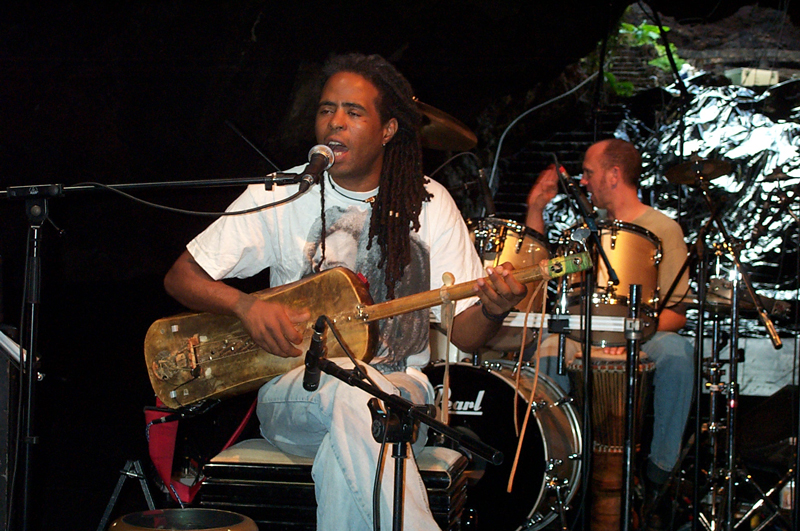(headline image: Hssan Hakmoun in Lanzarote, Spain, in 2000 playing guimbri – Photo by Angel Romero)
The guimbri is a traditional musical instrument intrinsically linked to Gnawa music, a genre noted for its rhythmic repetitiveness and the dialogic interaction between the lead vocalist and other musicians. It is frequently accompanied by karkabas, which are metal castanets, and a large drum.
This three-stringed bass plucked lute, sheathed in camel skin, features a rectangular body hollowed from a single piece of wood. Comparable in size to a guitar, it possesses a lengthy neck that traverses the body, emerging through the skin near the instrument’s base.
Notably, the guimbri is distinguished by several unique characteristics. It incorporates sliding leather tuning rings and a metal sound modifier. These elements facilitate a percussive playing style. The instrument is played by a malem, or master of ceremonies, who plucks the strings while simultaneously striking the skin beneath them, thereby producing a dual register of bass and percussion.
During nocturnal rituals, the malem employs the guimbri to guide the participants into trance states. The instrument is renowned for its low harmonic range, often drawing comparisons to the bass guitar in Western musical contexts.
Guimbri variations include the awisha, a smaller version of the musical instrument; and the double necked guimbri.
The guimbri is also known as guembri, gimbri, sintir, sentir and hajhuj.
The guimbri is used by musicians who play traditional music as well innovative artists who fuse roots music with rock, jazz and other genres. Prominent players include Maâlem Moktar Gania, Hassan Hakmoun, Mehdi Nassouli, Majid Bekkas, Asma Hamzaoui, Abdel Benaddi, and Yousra Mansour (Bab L’Bluz).



